
Data Through Q3 2021
Introduction
The CoreLogic Homeowner Equity Insights report, is published quarterly with coverage at the national, state and Core Based Statistical Area (CBSA)/Metro level and includes negative equity share and average equity gains. The report features an interactive view of the data using digital maps to examine CoreLogic homeowner equity analysis through the third quarter of 2021.
Negative equity, often referred to as being “underwater” or “upside down,” applies to borrowers who owe more on their mortgages than their homes are worth. Negative equity can occur because of a decline in home value, an increase in mortgage debt or both.
This data only includes properties with a mortgage. Non-mortgaged properties (that are owned outright) are not included.
Homeowner Equity Q3 2021
CoreLogic analysis shows U.S. homeowners with mortgages (roughly 63% of all properties*) have seen their equity increase by a total of over $3.2 trillion since the third quarter of 2020, an increase of 31.1% year over year.
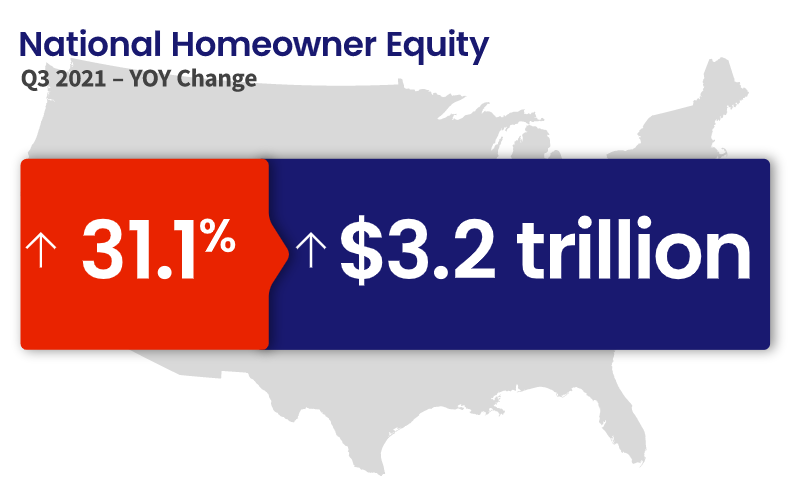
Negative Equity Falls
In the third quarter of 2021, the total number of mortgaged residential properties with negative equity decreased by 5.7% from the second quarter of 2021 to 1.2 million homes, or 2.1% of all mortgaged properties. On a year-over-year basis, negative equity fell by 28.9% from 1.6 million homes, or 3% of all mortgaged properties, in the third quarter of 2020.
Because home equity is affected by home price changes, borrowers with equity positions near (+/- 5%) the negative equity cutoff are most likely to move out of or into negative equity as prices change, respectively. Looking at the third quarter of 2021 book of mortgages, if home prices increase by 5%, 145,000 homes would regain equity; if home prices decline by 5%, 191,000 would fall underwater.
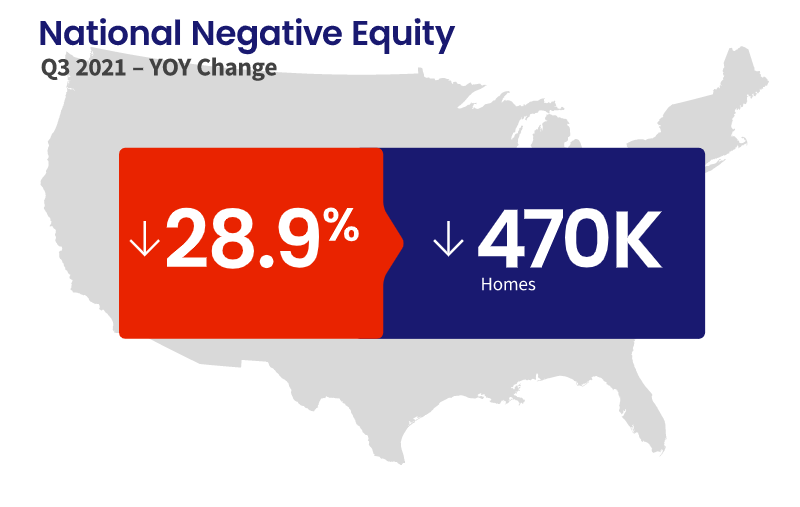
COVID-19 Impact
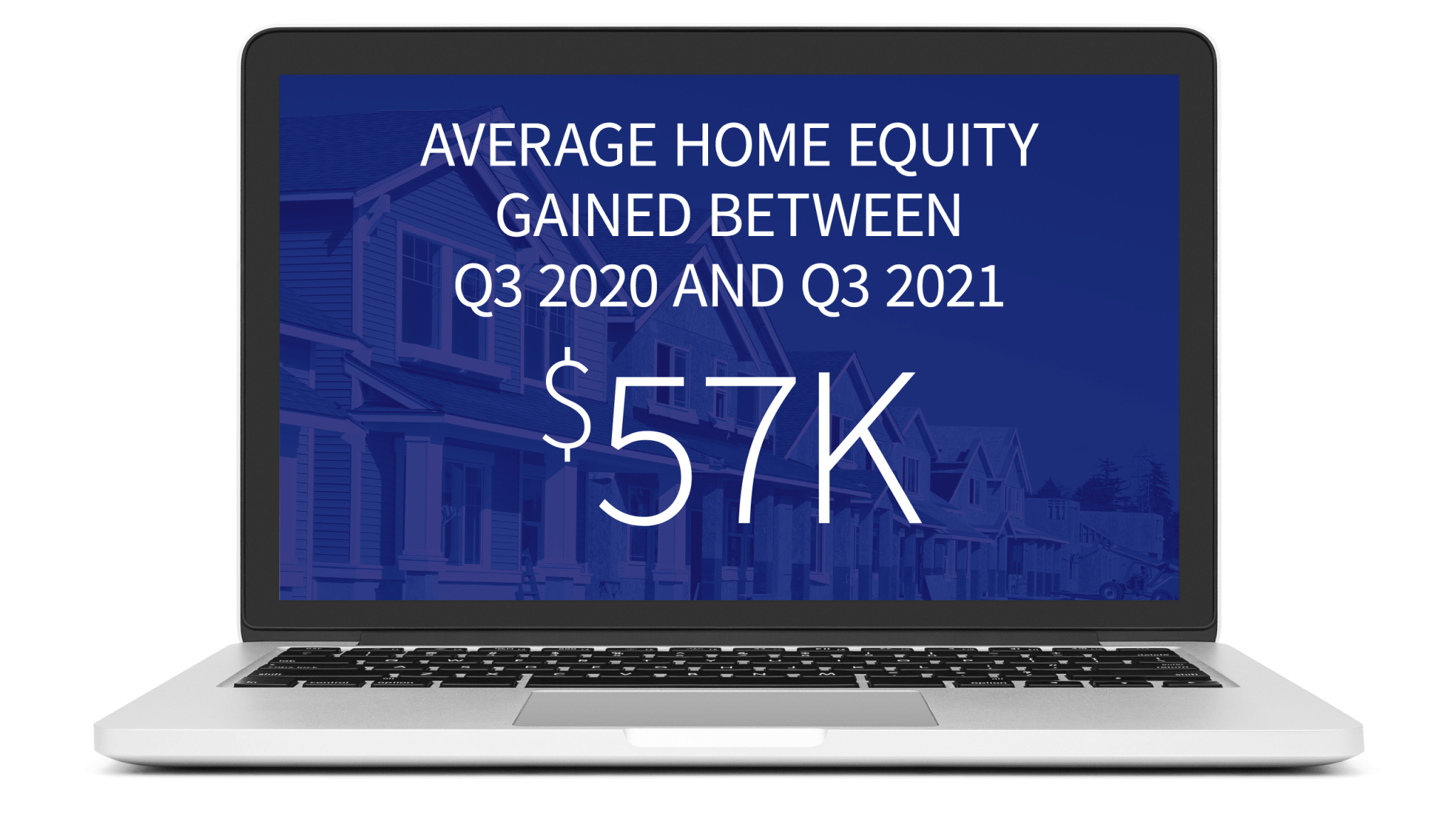
“Not only have equity gains helped homeowners more seamlessly transition out of forbearance and avoid a distressed sale, but they’ve also enabled many to continue building their wealth. This financial reserve will be especially helpful for homeowners looking to fund renovation projects.“
-Frank Martell
President and CEO of CoreLogic
National Aggregate Value of Negative Equity: Q3 2021
The national aggregate value of negative equity was approximately $276.2 billion at the end of the third quarter of 2021. This is up quarter over quarter by approximately $8.2 billion, or 3%, from $268 billion in the second quarter of 2021 and down year over year by approximately $8.3 billion, or 2.9%, from $284.5 billion in the third quarter of 2020.
Negative equity peaked at 26% of mortgaged residential properties in the fourth quarter of 2009, based on the CoreLogic equity data analysis which began in the third quarter of 2009.
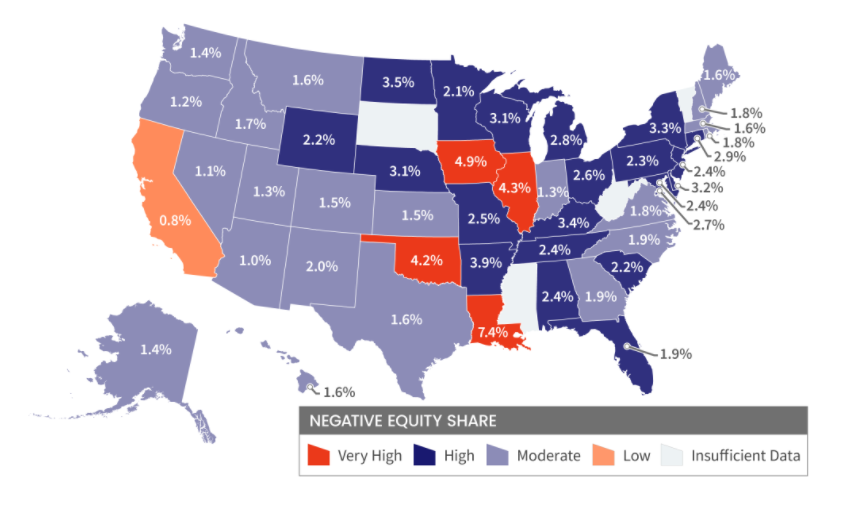
“Home price growth is the principal driver of home equity creation. The CoreLogic Home Price Index reported home prices were up 17.7% for the past 12 months ending September, spurring the record gains in home equity wealth.”
-Dr. Frank Nothaft
Chief Economist for CoreLogic
National Homeowner Equity
In the third quarter of 2021, the average homeowner gained approximately $56,700 in equity during the past year.
California, Hawaii, and Washington experienced the largest average equity gains at $118,700, $112,700 and $96,000 respectively. Meanwhile, North Dakota experienced the lowest average equity gain in the second quarter of 2021 at $15,400.
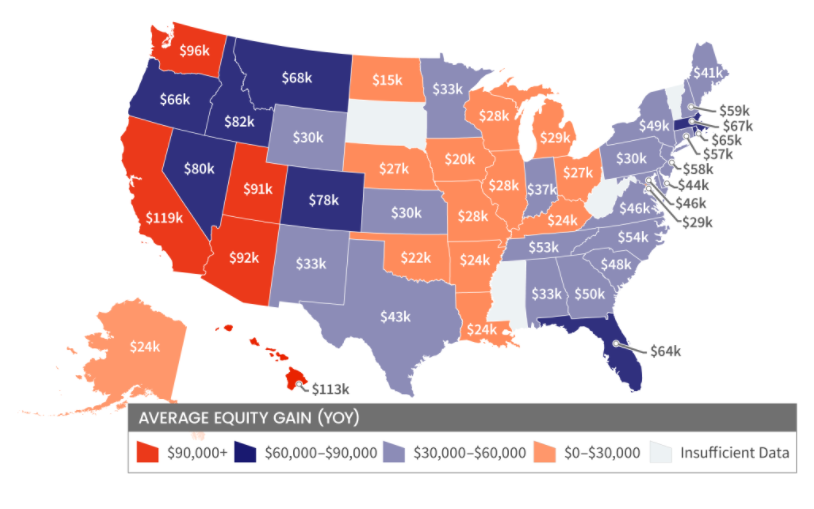
10 Select Metros Change
CoreLogic provides homeowner equity data at the metropolitan level, in this graphic 10 of the largest cities, by housing stock are depicted.
Negative equity has seen a recent decrease across the country. San Francisco-Redwood City-South San Francisco, CA, is the least challenged, with Negative Equity Share of all mortgages at 0.6%.
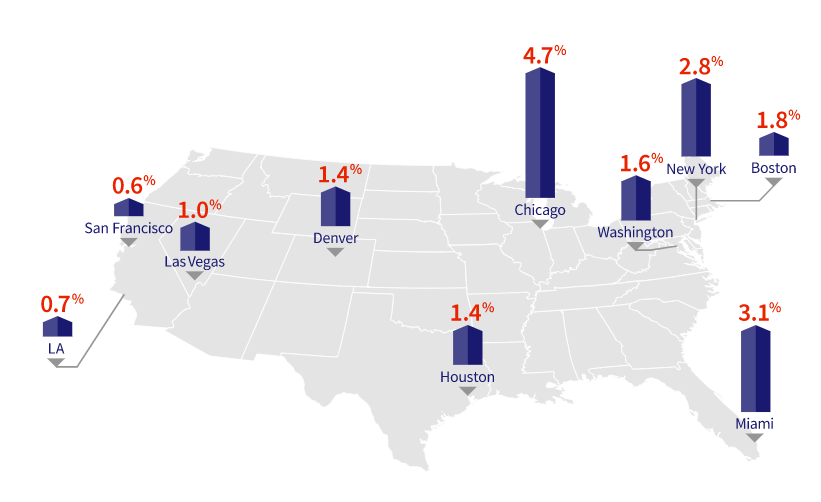
Loan-to-Value Ratio (LTV)
The graph represents National Homeowner Equity Distribution across multiple LTV Segments.

To learn more about the data behind this article and what CoreLogic has to offer, visit https://www.corelogic.com/.







Sign up to receive our stories in your inbox.
Data is changing the speed of business. Investors, Corporations, and Governments are buying new, differentiated data to gain visibility make better decisions. Don't fall behind. Let us help.













Sign up to receive our stories in your inbox.
Data is changing the speed of business. Investors, Corporations, and Governments are buying new, differentiated data to gain visibility make better decisions. Don't fall behind. Let us help.





